Developmental features and unique characteristics of peptide-specific PLZF+ innate-like T cells in mice
- PMID: 40480992
- PMCID: PMC12144119
- DOI: 10.1038/s41467-025-60617-4
Developmental features and unique characteristics of peptide-specific PLZF+ innate-like T cells in mice
Abstract
Peptide-specific PLZF+ innate-like T (PILT) cells are a member of the innate-like T cell family utilizing a diverse set of T cell receptor (TCR) Vβ chains. Yet there are no present studies providing clues into the developmental features of PILT cells at a transcriptome level. Here, we performed single-cell transcriptomic analyses of PILT cells and compared them to other members of the innate-like T cell family. We show that PILT cells share similar transcriptional profiles and overlapping developmental trajectories with invariant Natural Killer T (iNKT) cells. However, in contrast to iNKT cells, PILT cells display a polyclonal TCR repertoire closely resembling the one of conventional CD8 T cells, inferring MHC I restriction and a broader range of antigen specificity. We further show that artificial thymic organoid cultures (ATOC) support selection and development of PILT cells in vitro exhibiting similar transcriptional profiles to their counterparts maturing in the thymus. Moreover, using an "on-time" TCR retrogenic ATOC system, we provide evidence for an instructive role of TCR specificity in PILT cell lineage commitment and functional differentiation. Altogether, our findings provide further insights into the PILT cells unique characteristics and molecular mechanisms governing their development.
© 2025. The Author(s).
Conflict of interest statement
Competing interests: The authors declare no competing interests.
Figures
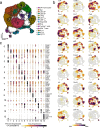
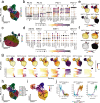
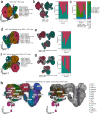
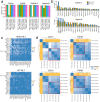
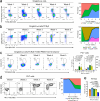


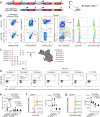
Similar articles
-
Thymic iNKT single cell analyses unmask the common developmental program of mouse innate T cells.Nat Commun. 2020 Dec 7;11(1):6238. doi: 10.1038/s41467-020-20073-8. Nat Commun. 2020. PMID: 33288744 Free PMC article.
-
TCR-inducible PLZF transcription factor required for innate phenotype of a subset of gammadelta T cells with restricted TCR diversity.Proc Natl Acad Sci U S A. 2009 Jul 28;106(30):12453-8. doi: 10.1073/pnas.0903895106. Epub 2009 Jul 15. Proc Natl Acad Sci U S A. 2009. PMID: 19617548 Free PMC article.
-
Quantitative Difference in PLZF Protein Expression Determines iNKT Lineage Fate and Controls Innate CD8 T Cell Generation.Cell Rep. 2019 May 28;27(9):2548-2557.e4. doi: 10.1016/j.celrep.2019.05.012. Cell Rep. 2019. PMID: 31141681 Free PMC article.
-
New Genetically Manipulated Mice Provide Insights Into the Development and Physiological Functions of Invariant Natural Killer T Cells.Front Immunol. 2018 Jun 14;9:1294. doi: 10.3389/fimmu.2018.01294. eCollection 2018. Front Immunol. 2018. PMID: 29963043 Free PMC article. Review.
-
The Role of Autophagy in iNKT Cell Development.Front Immunol. 2018 Nov 14;9:2653. doi: 10.3389/fimmu.2018.02653. eCollection 2018. Front Immunol. 2018. PMID: 30487800 Free PMC article. Review.
References
MeSH terms
Substances
LinkOut - more resources
Full Text Sources
Molecular Biology Databases
Research Materials

